We will be offering a wide variety of native plants on Saturday, May 11th at the Cooper Young Community Farmers Market. Native plants are a great choice to support birds, hummingbirds, butterflies, native bees, and other native pollinators. Once established they are easy to care for, coming back year after year. Most species will be available in four-packs, with some in four inch pots or one gallon pots. These are the species we expect to have available
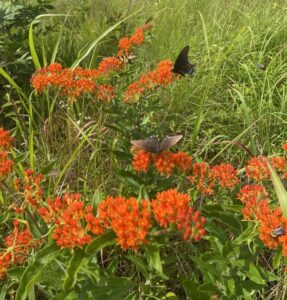
Milkweeds (Asclepias)
Milkweeds are well known as host plants for the Monarch butterfly caterpillars. They are also resistant to deer, rabbits, and other munchers. This year were are offering four different varieties. Common milkweed (Asclepias syriaca) is hardy in zones 3-8 and blooms in the summer months. It reaches 2′-4′ tall and enjoys full to part sun, and dry to medium soil moisture.
Do you have a wetter spot to fill? Rose milkweed (Asclepias incarnata) may be the right choice for your. This milkweed is an excellent plant not only for Monarchs but for a wide range of other native pollinators. It enjoys moist to wet soil in full sun, grows in zones 3-9, blooms in June and July, and grow to a height of 3′-5′.
Asclepias tuberousa (butterflyweed) is the most common milkweed in our region and can sometimes be seen growing along roadsides. A more petite plant, it reaches a height of 2′ and blooms bright orange in June, July and August. It enjoys full sun and a dry to medium soil moisture.
Whorled milkweed (Asclepias verticillata) is the most delicate of the milkweeds. It blooms into September, grows just 1′-2′ tall, and is topped with white flowers. Suitable for full and part sun, dry to medium soil moisture, and grows in zones 3-9. It performs well in sandy or gravelly sites, such as a rock garden.
Lamiaceae (Mint Family)
Monarda bradburiana (Bradbury’s Monarda) This pink blooming beebalm is shorter, just 2 feet tall, and more compact than M. fistulosa, making it a great option for landscape plantings, with all the same pollinator attracting power. Full sun or part shade.
Monarda citriodora (Lemon Beebalm) This beebalm features a purple, tiered flower that blooms late spring into summer. Growing 30 inches tall, this short lived perennial readily reseeds itself. Named for the lemony scent the leaves give off when crushed. Like other Monardas, it will attract an abundance of bees and butterflies.
Monarda didyma (Oswego Tea, Scarlet Beebalm) Hummingbirds love the red flowers of M. didyma. Can grow in sun or part shade but prefers moist soil, especially here in the south. Mine does great on the north side of our house. Blooms from May into the summer. Grows 2-4 feet tall. Perennial.
Monarda fistulosa (Wild bergamot, Beebalm) is a favorite of bees, butterflies and hummingbirds. Lavender flowers on 3-4 foot stalks. Tolerates a wide range of soils from medium-wet to dry. This perennial prefers full sun to part shade.
Blephia ciliata (Downy Wood Mint) Tight clusters of purple stacked flowers on stems just one foot tall. Blooms in late spring/early summer. This versatile plant thrives in full sun to nearly full shade.
Asteraceae (Aster, Daisy, Sunflower Family)
Conoclinium coelestinun (Blue Mist Flower) Blue-purple flowers attract butterflies, moths and long-tongued bees. Grows 1-3 feet tall in full sun or part shade, and prefers moist to wet soil conditions. Spreads readily.
Echinacea purpurea (Purple Coneflower) This well known pink-purple bloomer makes an attractive landscape plant. Long lasting flowers bloom from April through September on 2-3 foot stems. Can be grown in full sun or part shade in medium to dry soils. Attracts butterflies and hummingbirds.
Helenium autumnale (Sneezeweed) No, it wont make you sneeze! This 2-5 foot tall perennial flowers in late summer and early fall. Daisy-like golden flowers feature an attractive ball shaped head. Sneezeweed requires full sun and moist soil, such as along a stream, pond, rain garden or damp ditch. This plant is of special value to our native bees, and will also attract butterflies.
Liatris pycnostachya (Prairie Blazing Star) Four foot tall spires of striking purple flowers that bloom throughout the summer make this an exceptionally attractive native for landscaping. Full sun and dense plantings encourage straight, upright growth. Tolerant of drought and poor soil conditions. Attracts and abundance of bees and butterflies.
Ratibida columnifera (Praire Coneflower) This 2-3 foot tall yellow flower blooms from late spring into July, and will continue blooming into September if watered. Prefers full sun, easy to grow. In addition the attracting bees and butterflies, the mature seeds will feed birds when left standing.
Rudbeckia hirta (Black-eyed Susan) Another popular choice for landscaping and pollinator plantings! A 2-foot tall biennial, R. hirta readily reseeds itself. Grows in full sun to part shade, bright yellow daisy-like flowers with dark brown centers bloom from May into October.
Rudbeckia laciniata (Cut-leaf coneflower) This versatile plant can grow in full sun to full shade. In optimal conditions it can reach over 7 feet tall, but may only reach 4-5 feet in poorer soil conditions. The young leaves are edible. This plant will attract bees, butterflied and birds. Yellow flowers bloom from summer into fall.
Symphyotrichum novae-angliae (New England Aster) Maturing to five feet tall, the abundant bright purple flowers bloom late in the season, providing an important fall nectar source for a variety of pollinators, including Monarch butterflies. Thrives in full sun or part shade, and tolerates a wide variety of soils. Can be cut back mid-season to encourage bushier growth.
Vernonia gigantea (Giant Ironweed). I saved these seeds from the giants growing in our pasture, it can grow over ten feet tall in ideal conditions, but more typically reaches 3-5 feet. Brilliant magenta-purple blooms from June through October. Grows in sun or part shade. Does best in moist soil but is quite adaptable and hardy. Perennial. Attracts butterflies and bees.
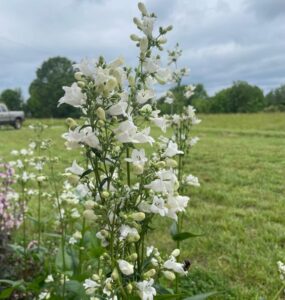
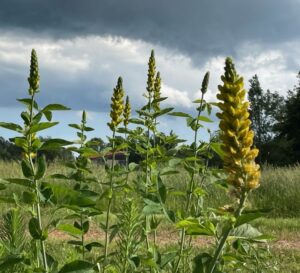
Other Plant Families
Chasmanthium latifolium (River Oats) Beautiful, low maintenance grass well suited to part shaded areas and medium to moist soils. This perennial can grow up to three feet tall and readily spreads by self seeding.
Thermopsis Carolina (Carolina Lupine, Blue Ridge Buck Bean) This perennial legume grows 3-5 feet tall and has striking yellow, lupine-like flowers. Native to forest openings in the southern Appalachians, it is adaptable to gardens throughout the eastern US. It prefers sun or part shade and moist soil. May require water in dry summer weather.
Hibiscus moscheutos (Rose Mallow) Big beautiful blooms evoke tropical flowers, even though this perennial is native to the eastern US.
It prefers full to part sun and wet to moist environments. Growing to five feet it blooms from July through September and is hardy in zones 4-9. Hummingbirds love the flowers!
Penstemon digitalis (Foxglove beardstongue) White flowers attract hummingbirds and bees. Blooms in May-July. Grows up to 3 feet tall, grows best in part shade and medium soil moisture.
Tradescantia ohiensis (Ohio Spiderwort) A great choice for supporting native bees! Purplish blue blooms on slender stalks blooms May through July. Tolerates a wide variety of soils from sand to clay. Full sun or partial shade, medium to dry soil moisture.
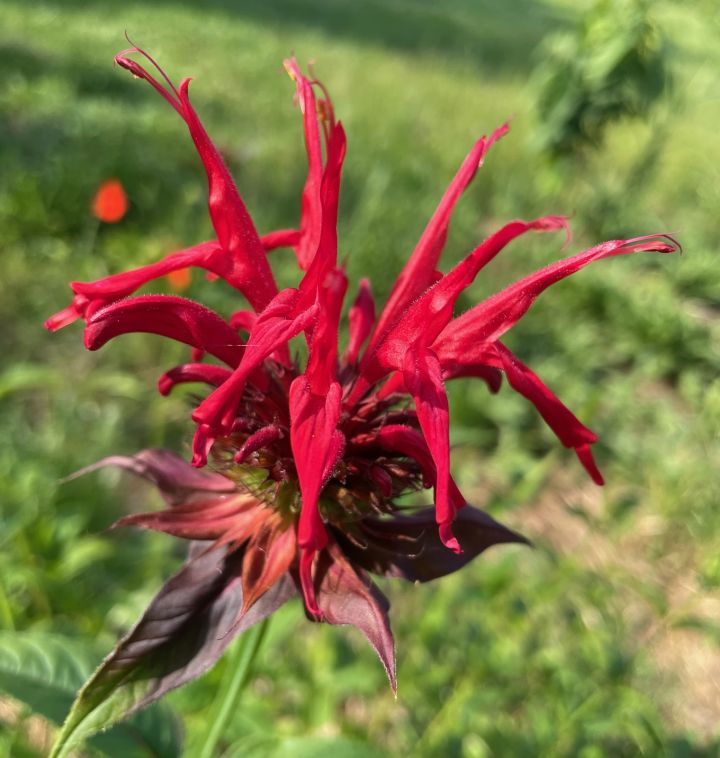
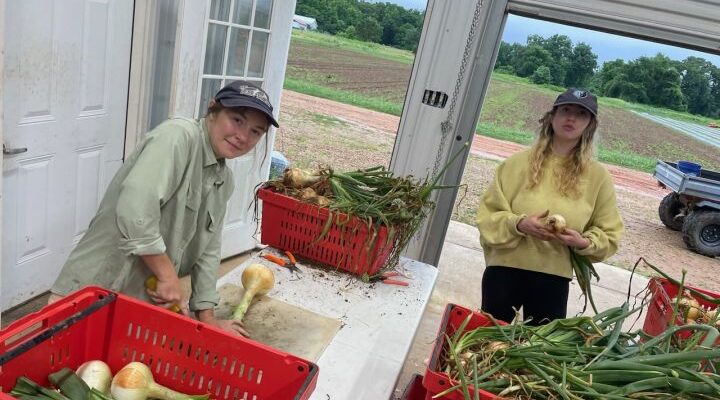




You must be logged in to post a comment.